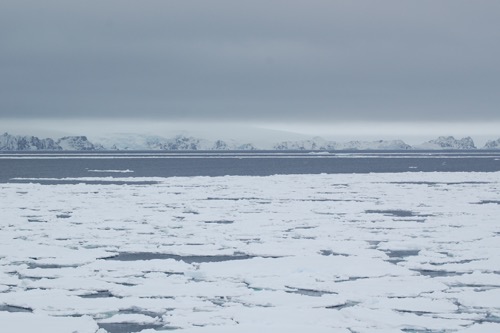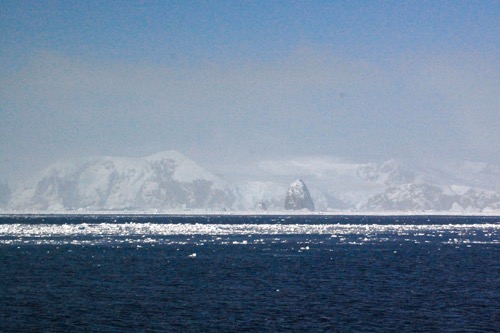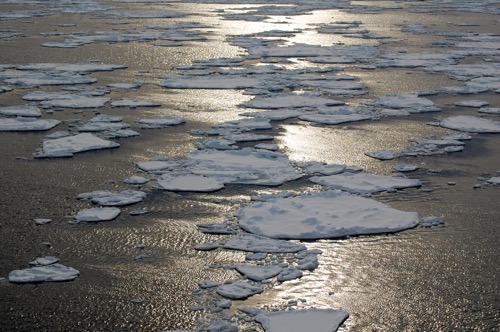Science Update
Today we are sampling seawater along the Palmer LTER grid lines (more on this tomorrow). The first cast of the day sent the trace metal rosette down to 3500m/10500ft! This cast took most of the morning to complete. The conventional cast went to a depth of 350m/1050ft and will be back on board soon. We will move approximately 100km/62mi to next LTER grid line later today for another round of sampling. These seawater samples are collected to generate profiles of the water in areas around the incubation stations. These profiles provide the science team with general information that can be used to understand the sampling area. We will continue to conduct profile samples throughout the research cruise.
Land Ho
Before we moved back to the Drake Passage to begin our grid sampling, we spent some time in the Gerlache Straight and the Bransfield Straight near the Western Antarctic Peninsula. This was my first opportunity to see land since we left Chile the week before. It was just any land - it was Antarctica! These land masses were some of the islands in the South Shetland Islands chain. These islands included Trinity Island and Tower Island. The large mountains moved in and out of the fog and clouds all day. One minute you would see the tops of the mountains and as you focused your camera, they would disappear.
 Lava rock and ice make up most of the visible land in this section of the South Shetland Islands.
Lava rock and ice make up most of the visible land in this section of the South Shetland Islands.
 Some of the taller mountain ranges seen from a distance. Antarctica is known for its high elevations across the continent.
Some of the taller mountain ranges seen from a distance. Antarctica is known for its high elevations across the continent.
Whether on land or on the water, ice has been the topic of conversation aboard the RVIB Palmer. Large and small icebergs, first-year ice and pancake ice are common sightings as we move closer to the Western Antarctic Peninsula. The RVIB Palmer moves through the ice with ease. The sounds of the ice hitting the hull can be heard on the video below. When you are inside the ship (especially in the galley) the sounds of the water and the ice are amplified. I imagine it is similar to being inside of a wash machine during the wash cycle. These photos show some of different types of ice that we have seen so far.
 These 'baby pancakes' were only 2-3 inches in diameter. These pancakes begin to form as ice crystals on the surface of the seawater bunch together - similar to making a snowball.
These 'baby pancakes' were only 2-3 inches in diameter. These pancakes begin to form as ice crystals on the surface of the seawater bunch together - similar to making a snowball.
 Pancake ice can smash together to form larger pieces of ice known as first-year ice. Seals and penguins are often associated with this type of ice.
Pancake ice can smash together to form larger pieces of ice known as first-year ice. Seals and penguins are often associated with this type of ice.
This iceberg moved past the ship at a rapid speed. The sun was setting and the lighting changed each minute the iceberg passed the ship. As the back of the iceberg came into view, we saw a large group of penguins on the back of the iceberg. Unfortunately, it was too dark (and too far away) for my camera to focus.
 Large chunks of ice can break off glaciers and become floating icebergs. Generally, 80% of the iceberg is still below the surface of the water.
Large chunks of ice can break off glaciers and become floating icebergs. Generally, 80% of the iceberg is still below the surface of the water.

Comments